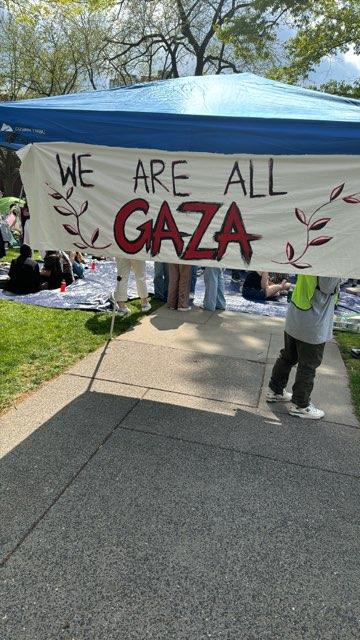Part II
The Abarbanel (or Barbanel) family from Eastern Europe is another interesting case. It is worth mentioning that quite a few eastern European Ashkenazim maintain a tradition of descent from the famed Spanish statesman and Rabbi Don Isaac Abarbanel. Aside from the many Jews in Poland and Russia with the surname Abarbanel, there are others who claim indirect descent; In personal correspondence to me, the noted expert on American-Jewish history, Dr. Jonathan Sarna—whose family hails from Lithuania—wrote that his family maintained such a tradition (“My father proudly spoke of his descent from Don Isaac Abarbanel” (Personal correspondence-December, 7, 2008)).
Boris Pasternak, author of “Dr. Zhivago,” hailed from a family of Odessa Jewish intellectuals who claimed descent from Abarbanel. His Sephardic lineage may have been claimed via his maternal grandmother who carried the Sephardi surname “Camondo.”
The famous Zionist activist, Hungarian-born Dr. Max Nordau was so taken with this particular family tradition that, according to his biographer, Jakub Zineman, his father, a nominally Orthodox Hungarian Jew with the surname “Siedfeld” kept the tradition of Sephardic ancestry alive by teaching his children Ladino and holding on to an over-sized house key which had allegedly been passed from father-to-son for generations, since the family’s expulsion from Spain in 1492. Nordau himself records in his diary the overwhelming emotional experience of returning to visit his ancestral home in Iberia.
Whether all of these traditions and stories are 100% true is impossible to prove at this point with certainty. What we do need however is more nuance and open-mindedness. Some of these claims are most assuredly bunk while others are very much legitimate.
Famed Yiddish figure, Y.L. Peretz’s Sephardic ancestry has been the subject of much discussion over the years. The respected Yiddish literary critic, S. Niger Charney, in a tribute article to Peretz published in the 1952 Yivo Annual of Jewish Social Science devotes considerable space to this particular family tradition. While Charney does call his Sephardic ancestry “a theory” and wishes there was documentary substantiation, he notes:
Though it has, to this date, not been definitely substantiated, Rosa Peretz Laaks, a close relative of the poet, tells in her memoirs that, “the Peretz family possessed a genealogical document which states that the family originally came from Spain.”
Charney cites two other prominent Yiddishists who speak of Peretz’s Sephardic heritage including Zalman Reyzen and the playwright Aaron Zeitlin who himself quotes the respected Jewish historian Dr. Ignac (Yitzhak) Schipper to the effect that “there was a definite tradition in Peretz’s family regarding their Sephardic ancestry.”
Charney seems convinced enough of the veracity of this claim and writes:
The two great currents of the last two thousand years of Jewish history—the Sephardic and the Ashkenazic—thus converged and became one in the person of Peretz … Peretz, a Sephardic-Ashkenazic Jew! What unity this would provide to the duality of his person! To his aristocratic intellectualism on the one hand and to his deep democratic attachment to the masses on the other. Peretz, a great grandson of the Jews who brought forth Samuel Hanagid, Ibn Gabirol and Judah Halevi, the Ibn Ezras and Maimonides; and Peretz, the typical representative of Polish Jewry before it was liquidated. What meaning such duality of origin would give to his role as one of the creators of a new Yiddish folk literature and to his continued aspiration to raise it to the level of a truly national literature!
Likewise, J. Bielinsky in an article entitled “Historical Curiosities; On the Oriental-Hispano origin of certain Russian Jews” published in the French-Jewish Periodical Le Judaisme Sepharade in 1936 writes, “Some people do not know that the greatest Yiddish writer Y. L. Peretz was born Sephardic. He was born in 1857 in Russian Poland to a Judeo-Spanish family, and before adopting the Yiddish vernacular, he wrote in Hebrew. But it was he who created in Poland in 1905 the first Yiddish daily Der Weg. He died in the midst of war in 1915, and if the Yiddish press in Paris wants to commemorate the anniversary of his death, Pariser Haint (a Yiddish daily that was published in Paris geared toward Polish Yiddish-speaking immigrants) might remind its readers of a seemingly paradoxical fact that it was a Sephardic Jew who founded the first Yiddish daily in Eastern Europe.”
The Sephardic Community Of Amsterdam Sends Sephardim to … Poland
During the course of the 17th and 18th centuries, the Spanish and Portuguese Jewish community of Amsterdam (its governing body was referred to as the mahamad), considered one of the wealthiest Sephardic Jewish communities in Europe, if not the world, would often hand over some money to poor indigent Sephardim and send them to settle far away (these were referred to in Portuguese as despachos).
Although most of these people were sent to places that had well-established Sephardic communities, some of them were also sent to overwhelmingly Ashkenazic Poland.
I thank Ton Tielen for extracting from the archives of the Spanish and Portuguese community in Amsterdam the names and details of five persons who were dispatched to Poland in the manner described above.
What follows is the Hebrew year, the names and the destinations of five such despachos(which they all have in common, namely Poland):
5448, Merari Belogrado, Polonia
5455, Nieto de H.H. Usiel, Polonia
5461, Mordehay Cohen, Polonia
5462, Rahel Cuna, Polonia
5474, Abraham Israel Guer, Polonia (apparently a proselyte to Judaism).
One of the names, Usiel, is of particular interest. He is referred to as a descendant of Hakham Uziel. This, according to Tielen, must be Hakham Isaac Uziel who died and was buried in Amsterdam in 1622. Uziel went to Poland in 1752 according to the archival document cited above. From another archival document, this time a list of Sephardim who migrated to Zamosc, Poland in the years 1588-1650, we come across one Abraham Uziel (whose name appears in the official documentation in the polonized form, “Uzelowicz”).
It is more than tempting to ponder whether the Uziel family, now well established in Zamosc, would not on occasion experience the arrival of family members. This would indicate that the Sephardic community in Zamosc did not die out soon after it was established, as many historians claim, but rather it continued to exist well into the 18th century. It would otherwise be difficult to understand why the mahamad would for all practical purposes dump a member of a prominent Sephardic family in the middle of Poland.
This becomes even more apparent when we recall that the mahamad strictly proscribed Ashkenazic-Sephardic intermarriage and even expelled not a few members for violating this clause. One rightfully wonders why they would send a prominent member of their community to a locale where the end result would be certain assimilation into the Ashkenazi majority population. This may be solid proof that Sephardic communities, albeit small, did exist in Poland with occasional boosters in the form of financial help and human material from larger and more established communities.
Above all, we must recall, as I did in my opening passage citing from Lavie, the distance between Sepharad and Ashkenaz is not all that vast in the grand scheme of things.
Lavie mentions her Alfasi antecedents arriving in Poland from the Sephardic diaspora at some point in the distant past. One must recall that Jewish diasporas were rarely stagnant; there were constant comings and goings from Sephardic centers to Ashkenazic centers and vice versa. As early as the 11th century, there was travel by Spanish scholars to Germany as well as by German and French scholars to Iberia. One of the most famous Ashkenazi scholars to settle in Spain was Rabbi Asher ben Jechiel who relocated from Germany to Toledo in the 14th century (see for instance “Relations Between Spanish and Ashkenazi Jewry in the Middle Ages” by Avraham Grossman in “The Sephardic Legacy” by Haim Beinart).
One of the most surprising things (to me at least), were the DNA results of what was thought to have been one of the oldest Ashkenazic clans, namely the Katznellenbogen family from Italy. The results suggest that the “ashkenazification” of some Sephardim began much earlier than previously thought—and again hammers home the point that the differences between Sephardim and Ashkenazim are somewhat artificial.
Interesting to note as well, as late as the 19th century, a Jewish girl from Lodz, Poland journeyed to the Jewish Mellah of Marrakech, Morocco to wed her fiancée. The girl’s name was Rina Lutzki and the groom was David Aldaudi, the scion of a prominent local family that claimed Davidic descent through the Exilarchs of ancient Babylonia and Spain. The match came about as a result of the mercantile activities of the Lutzki family. The latter ran a successful clothing and furniture business and were commissioned by the Sultan of Morocco to furnish his palace. It was due to these travels that the Lutzki brothers were made aware of the eligible Aldaudi bachelor and before long they proposed their sister as a suitable match. Rina relocated to Marrakech where she experienced some difficulty acclimating to her new surroundings. Before long however, the Moroccan-Polish couple decided to immigrate to the Land of Israel where they gave birth to a son. The product of this union would later grow up to be the prominent Rabbi Makhlouf Aldaudi (1825-1909) who served as the Hakham Bashi (Chief Rabbi) of the Jewish communities of Acre, Safed and Tiberias from 1889 to 1909.
Jewish history is replete with these types of migrations. Few Jewish diasporas were purebred; most Ashkenazi and Sephardi communities are a result of a mishmash of ethnicities, not to mention rites and customs.
A large prominent Sephardic clan from North Africa surnamed Sarfati maintains descent from the preeminent Ashkenazi sage, Rabbi Shlomo Yitzhaki, better known as Rashi who was born in Troyes, France. This is due to the fact that when the Jews were expelled from France in the 13th century, many of his descendants relocated to Spain and North Africa where they soon became Sephardicized.
Other Jews in Poland have maintained very interesting traditions of Sephardic descent. Rabbi Yosef Wallis, who heads the Israeli Arakhim organization, recently led a delegation back to the home of his tragic direct ancestor Rafael Valls on the Spanish island of Majorca. Valls was one of 37 secret Jews burned at the stake there in 1691 for refusing to renounce their Jewishness.
To be continued…
The author can be reached at [email protected]
By Joel Davidi Weisberger












